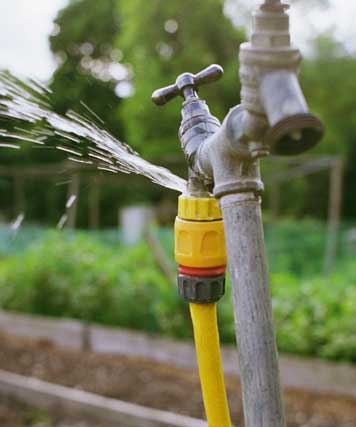Overview To Water Leakage Discovery In Your Home
Overview To Water Leakage Discovery In Your Home
Blog Article
How do you feel in relation to Detecting hidden plumbing leaks?

Early detection of dripping water lines can mitigate a potential calamity. Besides conserving you cash, it will certainly decrease the aggravation and aggravation. The minute you discover a leakage, calling your plumber for repair work is the best service. Nonetheless, some little water leaks might not show up. Right here are some hacks that assist if you can not detect it with your nude eyes.
1. Check Out the Water Meter
Every house has a water meter. Checking it is a surefire way that assists you find leaks. For starters, turn off all the water resources. Make certain nobody will purge, utilize the tap, shower, run the washing equipment or dish washer. From there, go to the meter and watch if it will transform. Since no person is using it, there ought to be no movements. That shows a fast-moving leakage if it moves. If you find no adjustments, wait a hr or two and also examine back again. This means you might have a slow-moving leakage that can also be underground.
2. Inspect Water Consumption
Assess your water expenses as well as track your water usage. As the one paying it, you need to see if there are any kind of inconsistencies. If you find sudden changes, regardless of your intake being the same, it means that you have leaks in your plumbing system. Remember, your water costs should fall under the very same array on a monthly basis. An abrupt spike in your bill shows a fast-moving leak.
Meanwhile, a steady increase on a monthly basis, despite having the very same habits, reveals you have a sluggish leakage that's likewise slowly intensifying. Call a plumber to extensively check your home, especially if you really feel a warm location on your floor with piping beneath.
3. Do a Food Coloring Test
When it comes to water consumption, 30% comes from bathrooms. If the color in some way infiltrates your bowl throughout that time without flushing, there's a leakage between the storage tank and bowl.
4. Asses Exterior Lines
Don't neglect to check your exterior water lines too. Should water seep out of the link, you have a loosened rubber gasket. One small leak can squander tons of water and also increase your water bill.
5. Evaluate and Assess the Situation
Homeowners ought to make it a practice to check under the sink counters and also also inside closets for any bad odor or mold and mildew development. These two red flags suggest a leakage so prompt attention is called for. Doing regular inspections, even bi-annually, can save you from a significant trouble.
Inspect for discolorations as well as deteriorating as most home appliances and pipelines have a life expectancy. If you presume dripping water lines in your plumbing system, don't wait for it to escalate.
Early detection of dripping water lines can mitigate a prospective catastrophe. Some tiny water leakages might not be visible. Checking it is a surefire way that aids you uncover leakages. One small leak can squander loads of water as well as spike your water costs.
If you presume leaking water lines in your plumbing system, do not wait for it to rise.
WARNING SIGNS OF WATER LEAKAGE BEHIND THE WALL
PERSISTENT MUSTY ODORS
As water slowly drips from a leaky pipe inside the wall, flooring and sheetrock stay damp and develop an odor similar to wet cardboard. It generates a musty smell that can help you find hidden leaks.
MOLD IN UNUSUAL AREAS
Mold usually grows in wet areas like kitchens, baths and laundry rooms. If you spot the stuff on walls or baseboards in other rooms of the house, it’s a good indicator of undetected water leaks.
STAINS THAT GROW
When mold thrives around a leaky pipe, it sometimes takes hold on the inside surface of the affected wall. A growing stain on otherwise clean sheetrock is often your sign of a hidden plumbing problem.
PEELING OR BUBBLING WALLPAPER / PAINT
This clue is easy to miss in rooms that don’t get much use. When you see wallpaper separating along seams or paint bubbling or flaking off the wall, blame sheetrock that stays wet because of an undetected leak.
BUCKLED CEILINGS AND STAINED FLOORS
If ceilings or floors in bathrooms, kitchens or laundry areas develop structural problems, don’t rule out constant damp inside the walls. Wet sheetrock can affect adjacent framing, flooring and ceilings.
https://www.servicemasterbyzaba.com/blog/how-to-detect-water-leakage-in-walls/

Do you enjoy reading about Locating water leaks? Leave feedback further down. We'd be pleased to find out your insights about this entry. We hope to see you back again later on. If you appreciated our blog post kindly do not forget to pass it around. Thanks for going through it.
Report this page